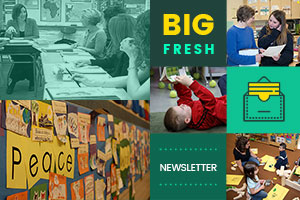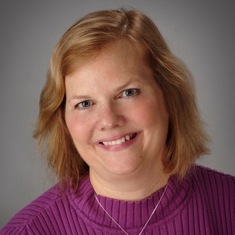Loneliness and the feeling of being unwanted is the most terrible poverty.
Mother Teresa
Look around your corner of your professional world. My guess is there are all kinds of ways you are creating a community. We know a safe place, a sense of belonging, and positive relationships make a difference. We go to great lengths to create learning spaces where every student feels welcomed.
Recently, I’ve been startled by statistics about loneliness. It is on the rise and is sometimes referred to as an epidemic. Most surprising to me is that it affects our younger generations the most. In this highly connected world with access to people 24/7, I’m still reeling from learning that nearly half of both Gen Z (ages 18—22) and millennials (ages 23—37) say they are lonely.
Many educators are in this age range. Classrooms can also be lonely places.
I began thinking about the communities where I feel welcomed. Online writing communities are not new to me. I helped establish one of the first groups for teacher writers, the “Slice of Life” challenge on Two Writing Teachers. I’ve participated in the summer writing community called Teachers Write. What began as a group of virtual strangers grew into a close community. I’m still touched by the way these communities lifted me and allowed me to thrive in some of my darkest and loneliest years.
Earlier this year, a new group of teacher writers was curated around a 100 Days of Notebooking challenge. I decided to give back and began leaving comments to encourage those who were bravely sharing their stories. A community forms when people are encouraged. As I was looking through entries to #100DaysofNotebooking I was struck by the amount of anxiety many educators felt about returning to school after a break or a weekend. Make no mistake: Mondays are hard for many of the humans in schools—it doesn’t matter how many birthdays they’ve celebrated.
The antidote is community.
Humans crave community, and the gut-twisting reality is that many people are shackled by loneliness. The solution is not a classroom makeover or a cute packet on friendship, nor is it more friends on Facebook or more followers on Twitter. The solution is meaningful one-on-one interactions, like a personalized comment in an online community or a conversation over coffee.
Here is the truth about being in a community—it might be something we need to create rather than wait to find on the sidelines of life. Take some time to invest in a writing community or spend some time after school chatting with the teacher across the hall. Let’s not be too busy to eat lunch with someone who might need a listening ear rather than uploading things to Google Classroom. The time we spend creating a community will have a far bigger positive effect than emptying out our email inboxes. What small act will you do to strengthen the community in your corner of the world?
This week we look at helping families feel welcome in our learning communities. Plus more as always—enjoy!
Ruth Ayres
Lead Contributor, Choice Literacy

Suzy Kaback is startled to see a picture of her deceased father on the wall when she visits her daughter’s seventh-grade classroom. It’s the start of learning about the power of ohana in schools.
Melanie Meehan explores research findings on homework, and provides a series of prompts for thinking through with teachers how to revise homework practices to be more relevant and helpful for students and families.
Kelly Petrin’s meditation phrase for the day—Do not fret, it only leads to evil—guides her through a home visit with a parent who worries about her daughter’s literacy skills. This is a terrific short read for thinking through how to make encounters with parents less stressful, as well as how to calm demons in your own mind.
Firoozeh Dumas shares a lesson she cherishes from her father about bringing joy to others.
Our new online course from Ruth Ayres, Better Student Feedback, will help teachers and coaches think through how to talk with students about progress and goals, as well as what to do with their responses. The course fee of $39 includes two months of access to the entire Choice Literacy library of 4000 articles and videos. If you have a current paid subscription to Choice Literacy, there is no charge for the course. Click here for details.

New members-only content is added each week to the Choice Literacy website. If you’re not yet a member, click here to explore membership options.
Bitsy Parks shares how she builds a learning community with displays and traditions that celebrate families.
Tara Barnett and Kate Mills discover that they have to change the way they think about connecting with families once students reach middle school.
In this week’s video, Christy Rush-Levine confers with Jaden. He is reading a book that mixes math with basketball, an activity he enjoys at home.
You can view dozens of articles and videos on connections between families and classrooms in the Family Relations section of the website.

Jennifer Allen explains how family literacy breakfasts bring the whole school community together through a special event.
In this quick video, Principal Lee Snider talks about how he deals with parent concerns.
BernNadette Best-Green celebrates the many ways parents are “showing up” to assist their children and connect with teachers in our strange new world of sheltering and learning at home.
Quote It:
A pat on the back is only a few vertebrae removed from a kick in the pants, but it is miles ahead in results.
Ella Wheeler Wilcox
That’s all for this week!



